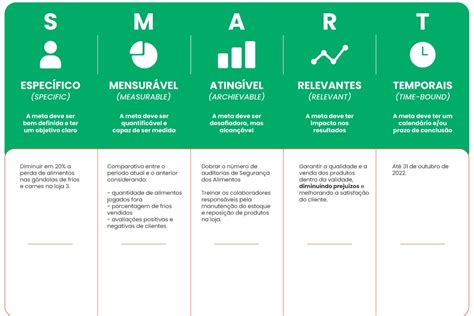Charting Your Course to Financial Freedom
For many men, financial independence isn’t just a dream; it’s a profound responsibility and a personal quest. It’s about building a life where financial stress is minimized, choices are maximized, and the future is secure for oneself and loved ones. Achieving this level of freedom requires more than just earning a good salary; it demands a smart, strategic approach to investing. This guide will outline key investment strategies specifically tailored to help men navigate their financial journey towards true independence.
Understanding your personal financial landscape – your income, expenses, debts, and future aspirations – is the critical first step. Without this foundational knowledge, any investment strategy will lack direction and purpose. Take the time to assess where you stand today before you plan where you want to go tomorrow.

Why Financial Independence is Paramount for Men
Societal expectations often place a significant burden on men to be providers and protectors. While these roles are evolving, the underlying desire to secure one’s family and personal future remains strong. Financial independence offers the peace of mind to pursue passions, support loved ones, weather economic storms, and leave a lasting legacy. It grants the freedom to make career choices based on fulfillment rather than just necessity, and to retire comfortably without financial strain.
Moreover, the journey towards financial independence instills valuable life skills such as discipline, patience, and strategic thinking. It empowers men to take control of their future, rather than leaving it to chance or external circumstances.
Core Pillars of a Smart Investment Strategy
1. Define Your Goals and Timeline
What does financial independence look like for you? Is it retiring by 50, buying a dream home, funding your children’s education, or simply having enough passive income to cover living expenses? Clearly defined, measurable goals are crucial. Attach a timeline to each goal to help determine the urgency and appropriate risk level for your investments.
2. Master Your Budget and Maximize Savings
You can’t invest what you don’t save. A robust budget is the bedrock of any successful financial plan. Track your income and expenses to identify areas where you can cut back and increase your savings rate. Prioritize paying down high-interest debt, as this frees up more capital for investment and reduces financial drag.
3. Understand and Embrace Risk Tolerance
Your comfort level with risk will dictate your asset allocation. Younger investors with a longer time horizon can generally afford to take on more risk (e.g., higher allocation to stocks) for potentially greater returns. As you approach your goals, a more conservative approach might be warranted. Be honest with yourself about how much volatility you can stomach without panic selling.

4. Diversification is Non-Negotiable
Never put all your eggs in one basket. Diversify across different asset classes (stocks, bonds, real estate, commodities), industries, and geographies. This strategy helps mitigate risk, as a downturn in one area might be offset by gains in another. ETFs and mutual funds offer an easy way to achieve broad diversification without picking individual stocks.
5. Adopt a Long-Term Perspective
Investing is a marathon, not a sprint. The power of compounding interest works wonders over decades. Resist the urge to constantly check market fluctuations or react emotionally to short-term news cycles. Stick to your plan, contribute consistently, and let time work its magic.
6. Automate Your Investments
Set up automatic transfers from your checking account to your investment accounts on payday. This removes the temptation to spend the money and ensures consistent contributions, practicing the principle of ‘paying yourself first’.

7. Continuous Learning and Adjustment
The financial world evolves, and so should your strategy. Stay informed about market trends, economic shifts, and new investment vehicles. Regularly review your portfolio (at least annually) to ensure it aligns with your goals, risk tolerance, and life circumstances. Adjust as needed, but avoid frequent, impulsive changes.
Key Investment Avenues to Consider
- Stocks, ETFs, and Mutual Funds: Offer growth potential. ETFs and mutual funds provide instant diversification across hundreds or thousands of companies.
- Real Estate: Can provide rental income and long-term appreciation. Options range from direct property ownership to Real Estate Investment Trusts (REITs).
- Retirement Accounts (401k, IRA, Roth IRA): Utilize these tax-advantaged accounts to supercharge your retirement savings. Employer matching contributions on 401ks are essentially free money – don’t leave it on the table.
- Bonds: Generally less volatile than stocks, bonds can provide income and stability, acting as a buffer during market downturns.

Common Pitfalls to Avoid
- Emotional Investing: Panicking during market dips and selling, or chasing hot stocks, often leads to poor returns.
- Ignoring Fees: High fees can significantly erode your returns over time. Be mindful of expense ratios on funds and trading commissions.
- Lack of Diversification: Over-concentrating your investments in one stock or sector exposes you to unnecessary risk.
- Delaying the Start: The biggest advantage you have is time. The sooner you start investing, the more powerful compounding becomes.
- Not Having an Emergency Fund: Before investing aggressively, build a solid emergency fund (3-6 months of living expenses) to avoid having to sell investments prematurely during unexpected financial crises.

The Journey to Financial Independence
Achieving financial independence is a journey, not a destination. It requires consistent effort, discipline, and a willingness to learn and adapt. By meticulously planning, understanding your risk, diversifying wisely, and maintaining a long-term perspective, you can build a robust investment strategy that not only secures your financial future but also provides the freedom to live life on your own terms. Start today, stay disciplined, and watch your wealth grow.




